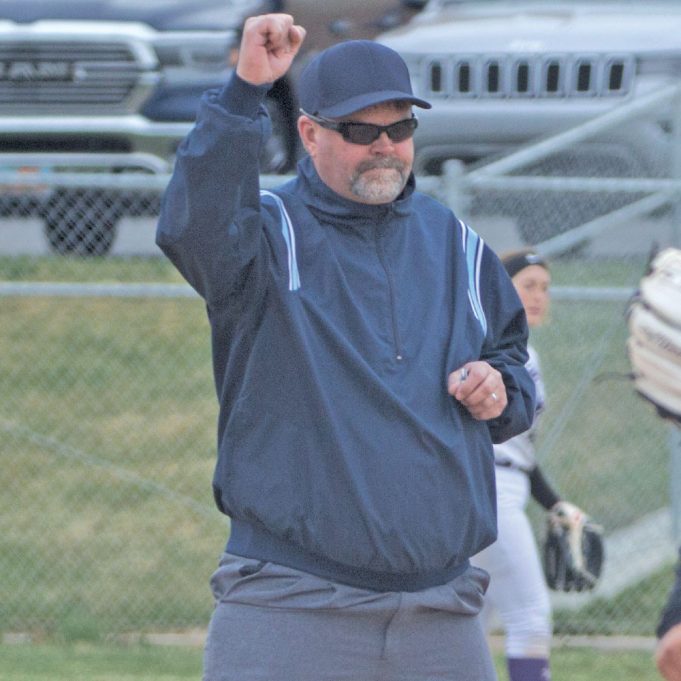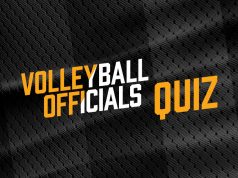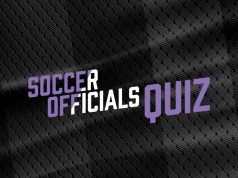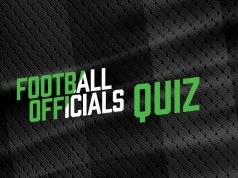Umpires have a variety of ways to communicate with each other, coaches, players and fans, both verbally and non-verbally. One of the best communication tools is signaling. When done correctly, signaling sets the tone for the game. When done poorly, it can lead to issues.
We use signaling in a variety of ways to communicate during a game. Below is a breakdown of the most common times we signal and some tips and techniques to help with each of those situations to help elevate your game.
Pre-pitch. Prior to the pitcher getting onto the pitching plate and delivering the ball, umpires need to communicate with each other through signals. Some of the most common signals used in these situations are the two-out timing signal and the infield fly is on/off signals. When it comes to giving these signals, consistency in timing is the key.
Plate umpires generally will discuss in the pregame when they plan on giving their signals. Some umpires like to give it right before they step in behind the catcher to get ready to see a pitch. Others like to give the signal early. The key is to be consistent with it so your partner(s) in the field know when to be on the lookout for it.
Base umpires have a lot to do before a pitch comes in — look to see where the fielders are playing, figure out their chase/coverage areas, pre-pitch possible rotations if a ball is put in play. It is important for base umpires to get into a routine and rhythm with their pre-pitch responsibilities and if plate umpires are not consistent when they give their signals, something may get missed.
It is also important for umpires to give the proper signal to their partners. Make sure you are using the prescribed mechanics and signals of the level you are working that day to make sure all partners are on the same page and understand what information you are trying to convey. Using the proper mechanics will also show you belong. If you give made-up signals or go off script, it looks amateurish and will take away your credibility.
As the plate umpire, give the signal and look at your partner(s) to make sure the signal is seen. However, the plate umpire does not need to hold the signal forever and wait for the partner to acknowledge the signal if it is taking too long. It should be a quick signal and move on. Holding the signal for a long period of time will only draw attention to yourself, and that is not something umpires want.
In situations where the plate umpire forgets to give a signal, the base umpire can initiate it to remind the plate umpire, or the base umpires in games using three or four umpires can give the signal to each other to make sure everyone is alert to the situation.
Balls and strikes. The most important signal for plate umpires is signaling balls and strikes. In some environments, coaches and players may not be able to hear the verbal ball or strike call. They will rely on the signal of the umpire. The most important thing when signaling strikes is to have consistency in timing and have your strike signal be the same every time. Every pitch is important, so there is no reason to signal one strike differently than another (except on a third strike). The timing should be the same each pitch as a difference in timing will be noticeable to coaches and players and will give the impression there is some doubt in the call if there is a delay in signaling.
A delay can also impact playing action as a runner may think a pitch is called ball four when in reality the umpire has called a strike but delayed giving the strike signal. This can put a runner at jeopardy. Consistency in timing is key to avoid this situation. It can also lead to confusion for scorekeepers and announcers if you are ever lucky enough to work a television game. Stay consistent in your timing with your strike call to avoid this situation.
A final thing to remember on signaling strikes is your third-strike signal (when it is not a swinging strike) should be different than your normal strike signal. There are times umpires forget to “punch out” on the third strike and it can lead to confusion. It can also lead to coaches and players thinking you are not focused and forgot the count.
Outs and safes. Because softball is played on a short field with 60-foot bases, a majority of calls at the bases are close. This does not mean you need to sell every out call or every safe call. In general, a simple out or safe call is perfectly fine for the majority of calls. Save the use of a sell call for when it is truly needed. If you overuse the sell call, your judgment may be questioned a lot more. The best piece of advice I ever received was,
“Use the sell call when you need to sell it to yourself.”
Having the game slow down takes time and repetitions. As you move up in levels, the speed of the game gets faster and faster, and it can take some time to train you eyes and brain to the speed of the game. Get yourself into the proper position, get set and read the entire play. Eventually, plays on the bases will become second nature and you will see every call is really not bang-bang. Watch umpires on TV and you will see they rarely sell calls unless it truly is bang-bang.
Be confident and strong in your signaling and it will lead to more credibility and confidence with coaches. The best thing to do is practice your safe and out calls in a mirror. Most of us have no idea what we really look like when we signal. See yourself in a mirror and practice so you can look strong and confident in your signaling. This will help convey conviction in your calls and hopefully lead to less questioning from coaches.
What's Your Call? Leave a Comment:
Note: This article is archival in nature. Rules, interpretations, mechanics, philosophies and other information may or may not be correct for the current year.
This article is the copyright of ©Referee Enterprises, Inc., and may not be republished in whole or in part online, in print or in any capacity without expressed written permission from Referee. The article is made available for educational use by individuals.
















